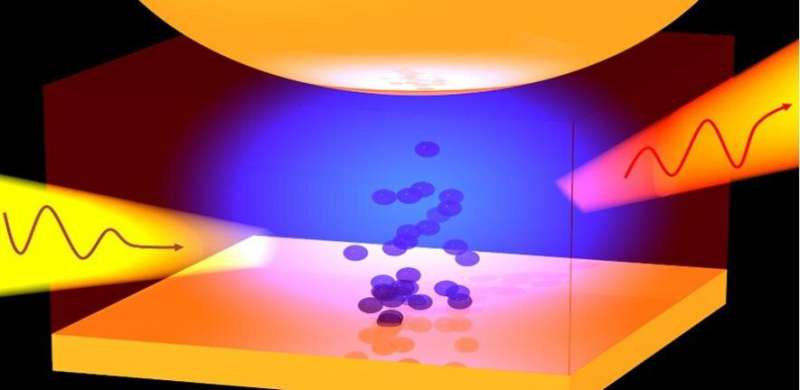Squeezing light inside memory devices could help improve performance

Researchers have developed a method to 'squeeze' visible light in order to see inside tiny memory devices. The technique will allow researchers to probe how these devices break down and how their performance can be improved for a range of applications.
The team, led by the University of Cambridge, used the technique to investigate the materials used in random access memories, while in operation. The results, reported in the journal Nature Electronics, will allow detailed study of these materials, which are used in memory devices.
The ability to understand how structural changes characterize the function of these materials, which are used for low-power, ultra-responsive devices called memristors, is important to improve their performance. However, looking inside the 3-D nanoscale devices is difficult using traditional techniques.
To solve this issue, the researchers had to reliably construct cavities only a few billionths of a meter across—small enough to trap light within the device. They used the tiny gap between a gold nanoparticle and a mirror and observed how the light was modified when the device was functioning correctly or breaking down.
Using this technique, the researchers were able to observe changes in the color of the light scattered from the device inner regions when few atomic defects and tiny oxygen bubbles were forming. This enabled them to identify the device breaking mechanism over multiple cycles.
"This work is a big advance in using light to show how materials behave when inside active devices," said Dr. Giuliana Di Martino from Cambridge's Department of Materials Science and Metallurgy, who led the research. "The strange physics of light interacting with matter on the nanoscale allows us to characterize these devices in real time, where their functioning depends on how the material behaves in a space just a few atoms across. This way, we can reveal the breakdown mechanisms upon cycling and open up new routes for device optimisation towards large-scale technology applications."
Gaining understanding into the factors determining device failure mechanisms is a fundamental prerequisite for developing energy-efficient and better-performing memory devices, an essential goal for enabling a competitive, data driven economy and driving business innovation through digital transformation and the Internet of Things.
More information: Giuliana Di Martino et al. Real-time in situ optical tracking of oxygen vacancy migration in memristors, Nature Electronics (2020). DOI: 10.1038/s41928-020-00478-5




















